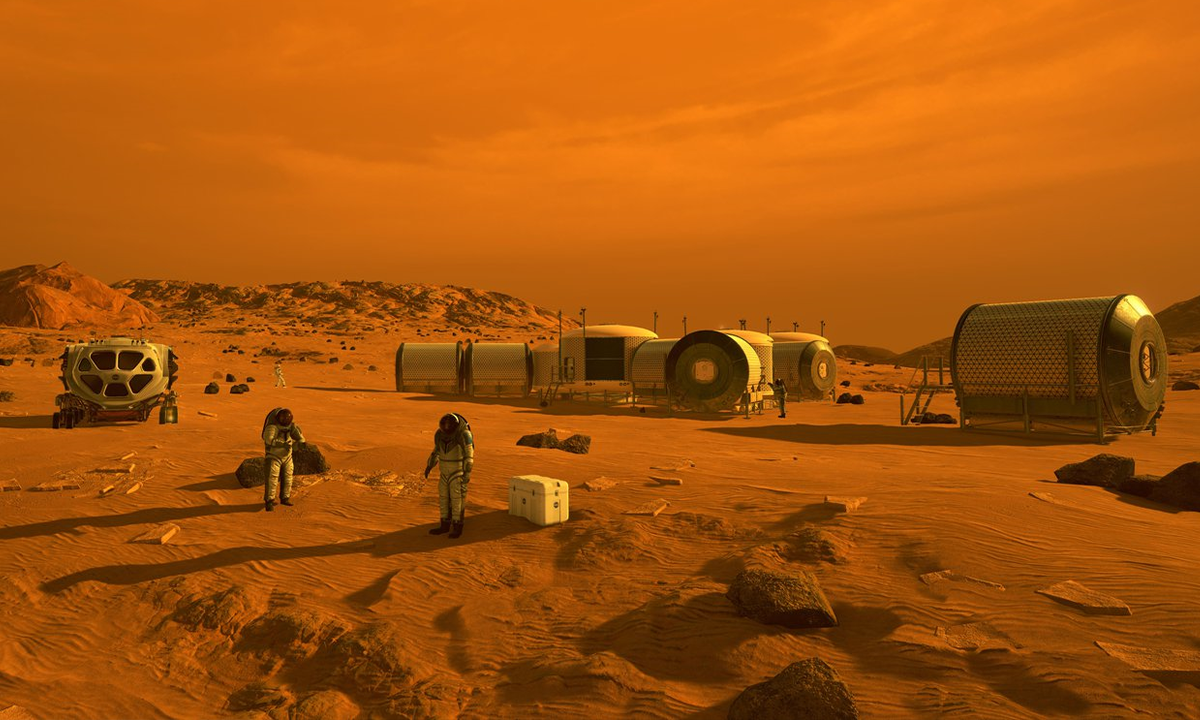

Packing enough fuel to get to Mars is difficult and expensive—packing fuel for the return journey is even harder, but microbes could eliminate the need for it.
The fuel required to return home from a human mission to Mars would cost 8 billion dollars alone. So, a team of scientists at the Georgia Institute of Technology proposed a plan to carry microbes to the red planet to biologically produce fuel for astronauts’ return journey. Researchers have been looking into ways to chemically make fuel on Mars for some time. Though microbes would probably need heavier support equipment, they would theoretically consume less power than chemical methods, according to the team’s new study published in the journal Nature Communications.
“I think it’s immensely promising. It’s the first in-depth study of its kind,” says Amor Menezes, a space synthetic biology researcher at the University of Florida who was not involved in the research. Menezes is the Science Principal Investigator for NASA’s Center for the Utilization of Biological Engineering in Space (CUBES). This is the first convincing evidence that bio-producing fuels on Mars is viable, he says.
The team’s plan entails growing two types of microbes using Martian CO2, water, and sunlight so that they produce fuel. The first microbe is a type of cyanobacteria, the same kind of organism which 2.4 billion years ago kicked off the oxygen-rich atmosphere we have today. This microbe converts captured CO2—the main component of Mars’ sparse atmosphere—into sugars and oxygen. The second type of microbe, an engineered form of E. coli, converts these sugars into a fuel called 2,3-butanediol. Their plan would aim to process 105 kilograms (231 lbs) of microbial biomass per day throughout a 500 Martian day mission. Because the research is so preliminary, it’s hard to say how feasible that will be in practice.
The excess oxygen from this process is vital because to burn, a flame needs both fuel and oxygen. On Earth, it’s easy to think only about fuel because oxygen makes up a fifth of our atmosphere, so there’s plenty to go around. But for rocket engines to operate in a void, they need to carry that oxygen with them. The microbes would actually produce an excess of oxygen which could be used for breathable air, too.
[Related: Mars may be too small to have ever been habitable]
“It’s a very far out concept” and sounds “science fictiony,” Menezes says, but after about five years of studying the question of whether Mars missions should use biofuels, looking at the potential cost and power savings, “the answer is an emphatic yes.”
Among the challenges to the plan are the fact that Mars is further from the Sun, meaning it gets less than half the solar radiation that Earth does, which will limit how fast microbes can grow. There’s also the feat of building microbe shelters—some kind of thin enclosed tank to feed and shelter the microbes and prevent them from freezing.
There is water ice on Mars which future explorers may be able to access, though that ice may contain salts that must be removed to make the water usable. In addition to light and water, microbes will need nitrogen, phosphorus, and a variety of trace elements which would be shipped from Earth, the study says.
Then there’s the intense ultraviolet radiation on the Martian surface. Cyanobacteria and E. coli are hardy microbes, but without Earth’s thick atmosphere, they would need shielding from the Sun’s harsh rays.
Beyond the technical hurdles, there’s the issue of NASA’s Planetary Protection protocols. At present, NASA prohibits bringing microbes to Mars. But “with all its benefits for cost and power,” Menezes says he could see it being approved down the road. At some point NASA’s Planetary Protection Office will “have to weigh in on whether or not synthetic biology” can be done on Mars, he says.
For all the technology’s future promise though, it’s still very new, so Menezes says it’s probably destined to aid a second or third mission to the red planet. “To be perfectly honest…on any real Mars mission, if you want to be absolutely confident that the astronauts are going to survive, you’re probably going to still pack almost everything that you might need on a first mission, just in case…”
Correction: 11/9/2021: A previous version of this story stated that the study done by Georgia Institute of Technology researchers was published in Nature when, in fact, it was published in Nature Communications. We regret the error.